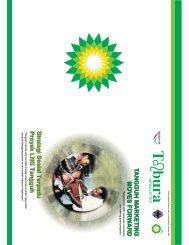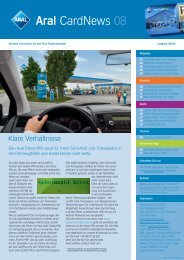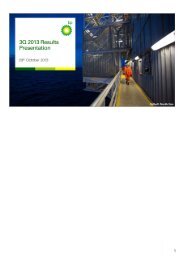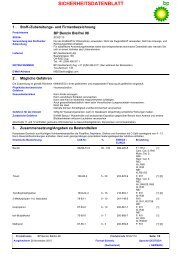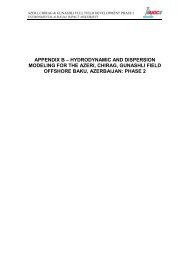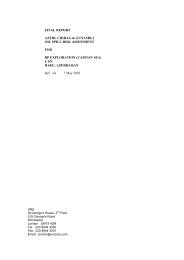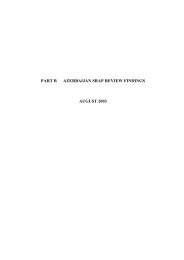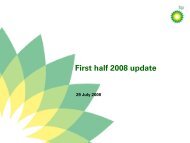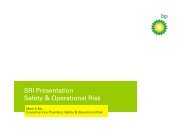Don Field Decommissioning Programme (pdf, 7.8MB) null - BP
Don Field Decommissioning Programme (pdf, 7.8MB) null - BP
Don Field Decommissioning Programme (pdf, 7.8MB) null - BP
Create successful ePaper yourself
Turn your PDF publications into a flip-book with our unique Google optimized e-Paper software.
DON-<strong>BP</strong>-001<strong>Don</strong> <strong>Field</strong> <strong>Decommissioning</strong> <strong>Programme</strong>Inspections on both the 8in pipelines were performed on an annual basis during theperiod 1990 to 2002. The technique used was either sidescan sonar or visual RemotelyOperated Vehicle (ROV), or a combination of the two. Sidescan was performed morefrequently, with visual ROV often used to supplement sidescan inspection shortfalls atthe extreme ends of the pipeline and to examine specific anomalies. A full General VisualInspection (GVI) was last carried out in 2009.Figure 10.20 Typical Cross-section of 8in Pipelines5.3.2 Operational HistoryBurialThe 8in production pipeline (PL598) has had a consistent burial profile. Exposure levelshave remained extremely low, and are generally associated with features such as tie-inspools and approaches to the <strong>Don</strong> manifold and crossings which were designed to beuntrenched. Post-installation, 643m of the line was exposed (4.8%). However, this slightexposure has decreased during the lifetime of the pipe as a result of remedial work andnatural backfilling. Remedial rock dump and mattress placement was performed in 1991,1992 and 1994 to restrain buckles, which also removed associated exposure. Theseremedial features have since become partly buried by seabed sediment. The 2009 GVIsurvey has confirmed our understanding that the stability of the pipeline remains stablein an out of use condition.The 8in water injection pipeline (PL599) has had a consistent burial profile. Levels ofexposure have remained extremely low and generally associated with design featuressuch as tie-in spools and approaches to the <strong>Don</strong> manifold, crossing and tee.Post-installation, 355m of the line was exposed (2.04%). However, this slight exposurehas decreased during the lifetime of the pipe as a result of remedial work and naturalbackfilling. The 2009 GVI survey has confirmed our understanding that the stability of thepipeline remains stable in an out of use condition.SpanThe 8in production pipeline has had very few spans. The few spans reported have beenassociated with upheaval buckling rather than seabed movement. By 1994, all spanswere successfully rock dumped.Pipelines10-20 May 2011




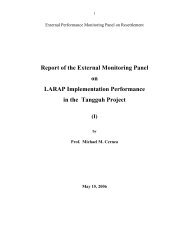
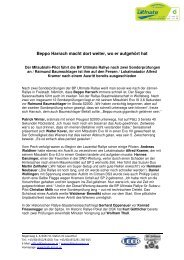
![[PDF] Deepwater Horizon: Accident Investigation Report - BP](https://img.yumpu.com/51697031/1/190x245/pdf-deepwater-horizon-accident-investigation-report-bp.jpg?quality=85)
